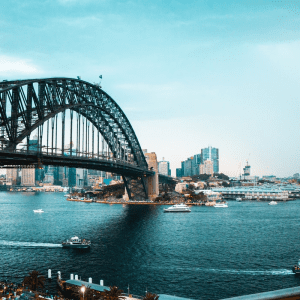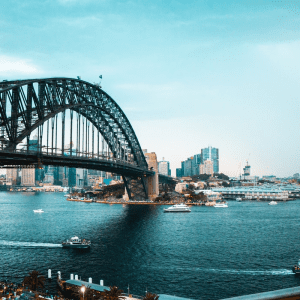 Holafly, a global leader in eSIM technology, has released a global report revealing the world’s most-visited destination during the June-August 2025 travel season, along with key trends in travel and connectivity. The survey1 shows that travel is back at scale, with people balancing regional getaways and global long-haul adventures.
Holafly, a global leader in eSIM technology, has released a global report revealing the world’s most-visited destination during the June-August 2025 travel season, along with key trends in travel and connectivity. The survey1 shows that travel is back at scale, with people balancing regional getaways and global long-haul adventures.
Australia’s mix of sunshine, modern cities and easygoing coastal escapes has landed it ninth in the global rankings, proving its year-round appeal – even during the local winter months. The survey shows travellers aren’t just chasing landmarks, but looking for experiences that immerse them in culture, nature and a real sense of place.
“The 2025 season confirmed that people’s appetite for travel hasn’t faded: almost three-quarters of those we surveyed packed their bags, many rediscovering destinations close to home and others venturing back to long-haul trips,” said Pablo Gómez, CEO at Holafly.
“At the same time, digital access has become an inseparable travel companion: although traditional SIM cards and roaming still dominate, eSIM adoption is accelerating and virtually everyone who has tried one would do so again. This desire to explore, to stay effortlessly connected, and an emerging awareness of sustainability encourage us to keep innovating so that, wherever they go, travellers can always feel at home,” continues Pablo Gómez, CEO at Holafly.
Spain tops the list of most-visited destinations, with Barcelona, Málaga, Madrid, and Seville offering a blend of culture, architecture, Mediterranean beaches, and cosmopolitan energy. South Africa follows with Cape Town’s coastal scenery and Durban’s lively spirit. Japan dazzles travellers with Tokyo’s neon skyline, Kyoto’s temples, and Osaka’s cuisine and nightlife.
Canada balances Toronto’s multicultural buzz with Vancouver and Victoria’s coastal calm, while the U.S. offers iconic cities like Las Vegas and New York alongside Florida and California’s scenic escapes. France comes in sixth and the United Kingdom in seventh, reaffirming Europe’s timeless appeal. From Parisian romance and the French Riviera to London’s cosmopolitan energy and Cornwall’s rugged coasts.
Mexico charms with Cancún’s tropical allure and Mexico City’s cultural vibrancy, while South Korea rounds out the top 10 with Seoul, Busan, and Jeju Island showcasing K-culture, nightlife, and natural wonders.
The report reveals that staying digitally connected is now essential for travellers, with only 0.8% going completely offline this summer. Travellers seek to balance price, convenience, and reliability, so while traditional roaming (31%) and local SIMs (27%) still dominate, eSIMs (19%) have crossed into the mainstream. Younger, tech-savvy travellers particularly value the ease of downloading a digital profile before departure and the peace of mind of transparent coverage.
Momentum for eSIMs is being powered by newcomers, with 18% of eSIM users trying it for the first time, and an overwhelming 95% mention that they would use it again. Adoption is strong amongst travellers navigating multi-country journeys (26%) and who demand flexible, secure digital connections.
Rise of “bleisure” travel is also driving eSIM adoption, with one in five business travellers extending trips to mix work with leisure. This reflects how hybrid work and flexible schedules are blurring traditional boundaries.
Younger professionals are driving the trend, with more than two-thirds (65%) of business travellers this season being aged 25-45. Many are turning work trips into opportunities for cultural immersion, relaxation, and inspiration.
Australians lead Asia-Pacific outbound travel, making up 44.2% of all regional travellers. One in three (31%) now choose eSIMs, nearly equal to local SIMs (37%), highlighting the high demand for seamless, long-haul connectivity.
More travellers are weaving sustainability into their journeys, with over one in three eSIM users (36.3%) already considering environmental impact as greener, mobile-first connectivity becomes the new travel norm.
The combination of increasing eSIM adoption, bleisure, and sustainability is giving rise to a new type of traveller, one who is an early adopter, sensitive to environmental impact, and seeking digital solutions that seamlessly combine convenience, security, and responsibility.
“We are entering a new chapter where digital access is not just about being connected, but about empowering travellers to move with freedom, confidence, and purpose. eSIM is at the heart of this transformation, a technology that simplifies today and opens the way for a more sustainable tomorrow,” Pablo Gómez, CEO at Holafly.
Guest Contributor
2025-09-24 01:05:00


